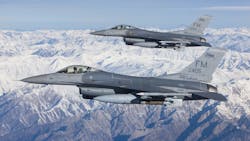GE Aviation looks to 3D printing to obtain crucial spare parts for jet engines for U.S. combat aircraft
WRIGHT-PATTERSON AFB, Ohio – Adopting new manufacturing technologies often has proven to be a game changer for companies seeking to enter a new market or retain their leadership in an existing one. For GE Aviation, 3D printing is the latest tool for staying ahead of its competitors in the aircraft industry. Automation World reports. Continue reading original article
The Military & Aerospace Electronics take:
19 July 2021 -- Though GE Aviation engineers originally had developed the engine for the B-1 supersonic bomber, by 1970 the company no longer was seen as a leading supplier.
That opinion changed in the 1980s when GE Aviation designed a new engine around the B-1 core to provide the U.S. Air Force with propulsion systems for its F-16 and F-15 fighter aircraft. Decades later, those F110 jet engines still powers most frontline F-16 fighters.
To keep its fleet flying, the U.S. Air Force continually searches for the best ways to procure parts, including crucial spare parts for planes that have been in service for decades. That’s why the Air Force’s Rapid Sustainment Office (RSO) was receptive when representatives from GE Additive approached them last year with the idea of making some parts with 3D printing.
Related: Military starts to run with 3D printing and additive manufacturing
Related: The dawn of military 3D printing
John Keller, chief editor
Military & Aerospace Electronics
